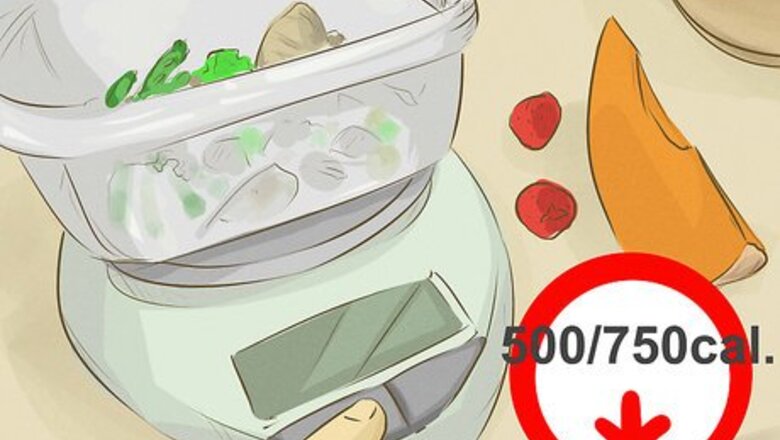
views
X
Research source
There is no way to target belly fat, but diet and exercise will eventually burn off belly fat. Knowing how to take the first step can help you feel better and get you on the road to a healthier, more active lifestyle.
Changing Your Diet Style
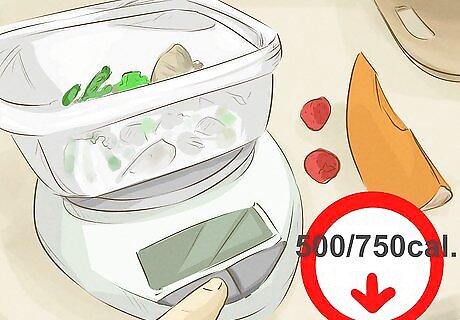
Cut back on calories. The most important part of losing weight is not working out until you collapse — it's your diet. If you burn 500 to 750 more calories than what you eat every day, you will lose 1–2 pounds every week (any more than that is considered unsafe weight loss). There are tons of little changes you can make to cut calories from your diet, from replacing high-calorie dressings with vinaigrette and asking for all dressings/sauces served on the side, eating at the table instead of in front of the tv, skipping cheese and other fatty additions to your salads and meals, using smaller plates, leave off the whipped cream on your coffee drink, and on and on.

Eat more protein. Protein is required by the body to repair damaged cells and plays a vital role in growth and development. But it can also play a role in weight loss. Diets high in protein tend to make people feel fuller, and when paired with a reduction in carbohydrate intake these diets can help with weight loss. However, it's important to remember that not all sources of protein are good for you: red meat and full-fat dairy products, though high in protein, can also increase the risk of heart disease. Good sources of protein include: Soy protein Legumes and beans Nuts Fish Skinless poultry Lean beef or pork Fat-free or low-fat dairy products

Eat polyunsaturated fats. While saturated fat leads to the body's retention of visceral fat, causing abdominal girth and excessive weight gain, studies have shown that a diet high in polyunsaturated fat helps promote the production of muscle mass instead of body fat. Polyunsaturated fats can also help reduce cholesterol levels in the body, lowering the risk of stroke and heart disease. Sources of polyunsaturated fats include: Olive oil Soybean oil Corn oil Sunflower oil Salmon Mackerel Herring Trout Walnuts Sunflower seeds Tofu Soybean
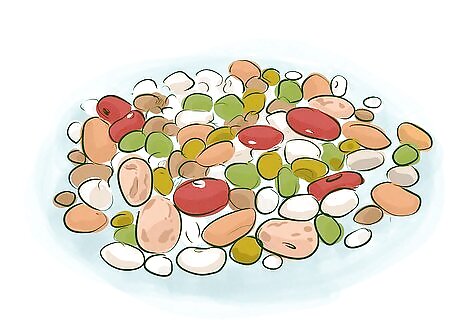
Eat low-glycemic-index foods. Foods that are low on the glycemic index (GI) are digested and absorbed more slowly than high-index foods, and when coupled with increased physical activity a low-GI diet has been shown to be effective in losing weight. Foods that are low on the glycemic index include: Beans and lentils Apples Apricots Bananas Carrots Corn Mango Oranges Certain types of pasta
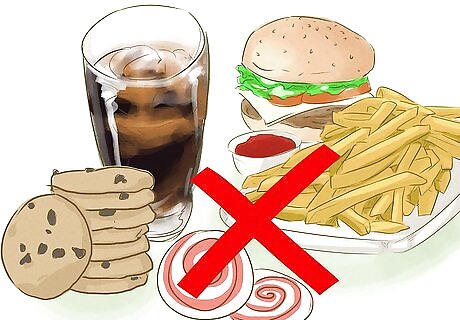
Avoid processed foods. Processed foods are often reached for as comfort food. But certain processed foods, like refined grains and refined sugars, increase inflammation in the body, and have been linked to excess belly fat.
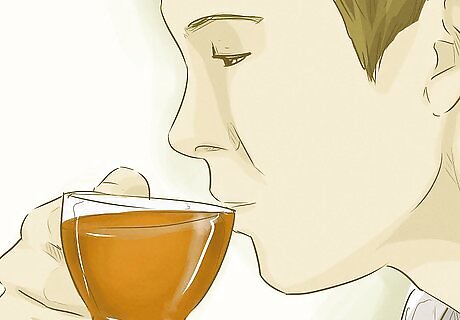
Drink green tea. Some studies suggest that drinking green tea (including decaffeinated green tea) or taking green tea extracts can increase the body's rate of fat oxidation and may decrease overall body fat. The studies used green tea extract, administered by capsule, but dieters may also get some of the same benefits from drinking green tea.
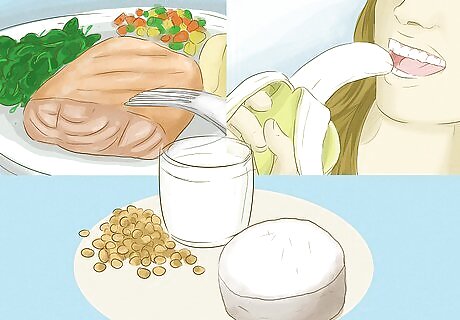
Get enough calcium. Adults typically need around 1,000 milligrams of calcium every day to help maintain muscle and nerve function, and it's necessary for healthy bones and teeth. But calcium may also help prevent the body from storing visceral fat in the abdomen. Though studies have not shown a drastic change in weight due to increased calcium intake, researchers suggest that it may have a small effect in some people. Calcium requires vitamin D to be absorbed into the body; therefore, be sure to get enough vitamin D as well. Sources of calcium include: Dietary supplements Non-fat or low-fat milk and dairy products Kale Salmon Tofu (with calcium sulfate)
Exercising and Staying Active
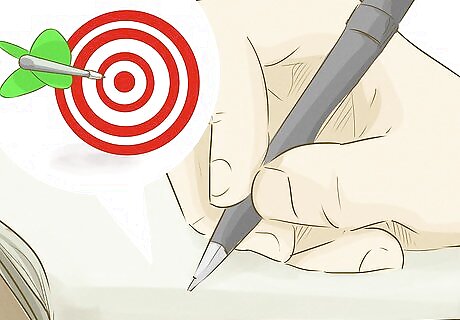
Set goals. Making goals will help you stay motivated by giving you something concrete to work toward. Setting SMART goals is widely considered the best way to set goals and stay on track. SMART goals are: Specific, Measurable, Attainable, Realistic and Time constrained. For instance, instead of saying, "I want to be stronger," your goal is something like, "I want to be able to bench press 100 pounds, three times in a row, three months from now." Or, "I want to lose 10 pounds in the next 4 months." Once you have set your goals, you can make a plan to achieve them. What do you need to do to achieve your goal? As you approach your goal, start thinking about your next SMART goal to set and achieve. EXPERT TIP Laila Ajani Laila Ajani Fitness Trainer Laila Ajani is a Fitness Trainer and founder of Push Personal Fitness, a personal training organization based in the San Francisco Bay Area. With over 10 years as a trainer and exercise specialist, Laila has expertise in competitive athletics (gymnastics, powerlifting, and tennis), personal training, distance running, and Olympic lifting. Laila is certified by the National Strength & Conditioning Association (NSCA), USA Powerlifting (USAPL), and she is a Corrective Exercise Specialist (CES). Laila Ajani Laila Ajani Fitness Trainer Women and men often lose weight and gain muscle at different rates. Biologically, it is difficult for females to gain as much muscle mass as males. Also, females naturally have a higher body fat percentage than males. Because of that, it's unfair to compare your weight loss with a male partner, as it occurs at a different rate. It's important to avoid comparison in fitness journeys.

Focus on cardiovascular exercise. Cardiovascular exercise is one of the best ways to lose weight. Studies show that cardiovascular exercise like walking, jogging, and running is highly effective at any degree of intensity. That's because cardio/aerobic exercise works the muscles in your arms, legs, and hips, and increases blood flow to all sets of muscles. Effective cardio exercises include: Walking Jogging/running Bicycling Swimming Skiing Stair climbing Elliptical training Rowing Aerobic dancing

Lose fat with high-intensity interval training (HIIT). If you're trying to lose weight fast, HIIT training can super-charge your metabolism for upwards of 24 hours after exercising. This means your body will continue burning calories long after you've ended your workout. HIIT burns more calories in less time than steady-state cardio. In one study, researchers looked at two groups, one running for 30 to 60 minutes three times per week, the other doing four to six 30-second treadmill sprints, resting for four to six minutes between each sprint. After six weeks, it was found that the group doing HIIT training lost more weight. For HIIT to work, you need to be giving about 90% all-out effort during the high-interval portion. This means not walking, jogging or even running — you should be sprinting, unable to carry on a conversation. Start out with high-intensity intervals that last for 30 seconds, then rest (by walking or doing low-intensity exercise, not by standing still) for a minute. Eventually you'll want to do your high-intensity training for longer periods (try 60 to 90 seconds) and decrease your rest periods to a 1:1 ratio. Start your HIIT workout with a five minute warmup, then do 20 minutes of HIIT, and then cool down for another five minutes. Try biking, sprinting, and rowing.

Lift weights. Weight training is a great tool for losing weight, toning muscles and it can actually help your body burn calories more efficiently. Experts recommend incorporating two to three weight-training sessions per week, with noticeable results in just a few weeks.

Work your core. When many people think of core strengthening, they think of stomach crunches. Crunches are helpful for building abdominal muscles, but contrary to popular belief, crunches won't do much to lose the layer of fat stored in your belly, and can actually cause significant damage to the spine. Instead, try a workout routine that strengthens your whole core, like yoga, or try abdominal presses and planking.
Making Lifestyle Changes
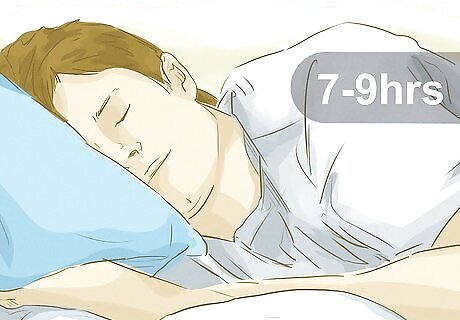
Get enough sleep each night. Studies have shown that getting less than five hours of sleep each night or more than nine hours of sleep can result in an increase in weight gain. Some studies further show that not getting enough sleep increases the body's cravings for high-calorie foods, and led to an overall increase in caloric intake. Adults should get between seven and nine hours of sleep each night.
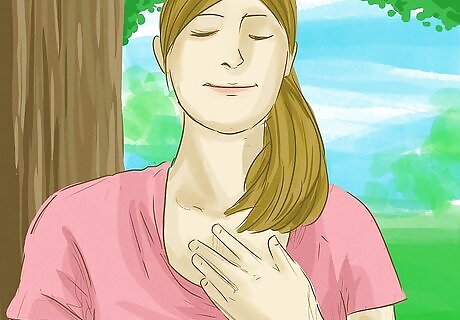
Keep your stress levels low. Stress causes the body to crave fatty foods, often called "comfort food", and can also lead to snacking or eating when the body isn't actually hungry. Finding ways to lower your stress levels can help you feel better and may help you lose weight faster.

Increase or vary your activity level. Try something new. That will help keep you interested and wanting to do more. Repeating the same workout at the gym for month after month will lead to a plateau where you will stop seeing gains. Try something different, or hire a trainer to give some variety to your exercise program.
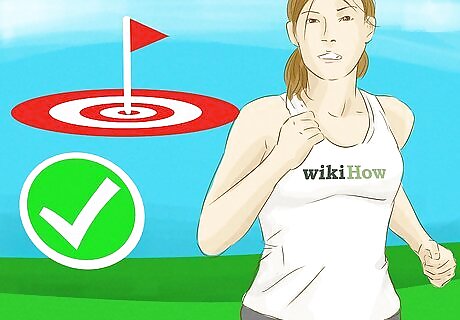
Stay motivated. Often times, people lose motivation to stick with a diet or an exercise routine. Finding a reason to stay motivated beyond belly fat goals, like overcoming a genetic predisposition to excess body weight or working toward fitting into your favorite article of clothing again, can help you stay motivated to meet your fitness and lifestyle goals.














Comments
0 comment